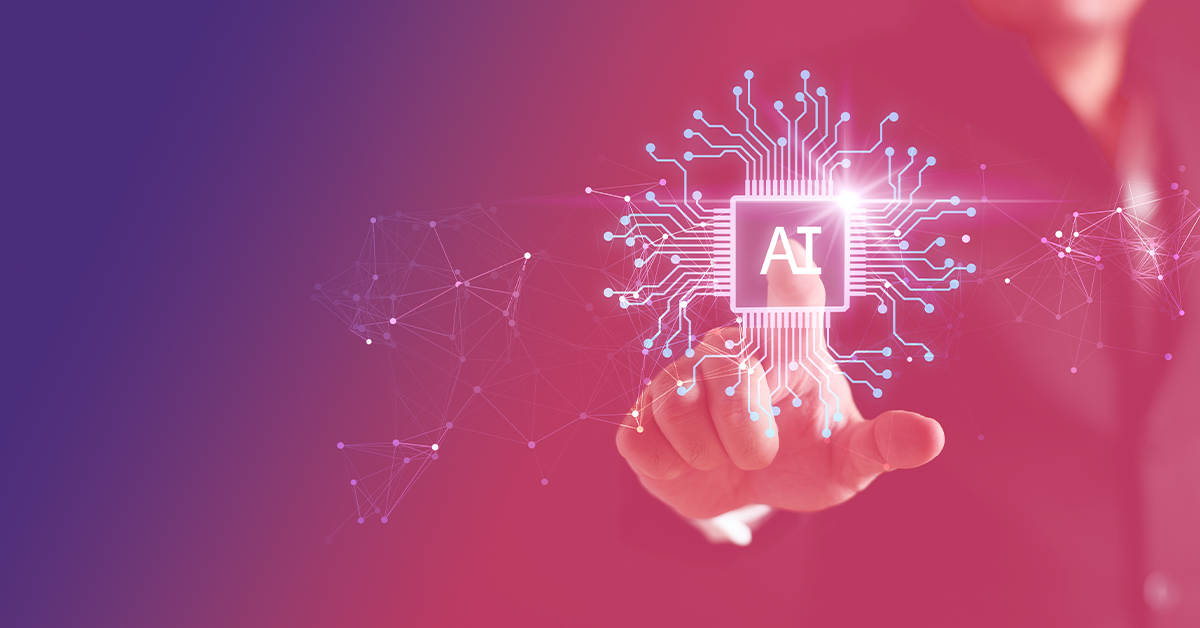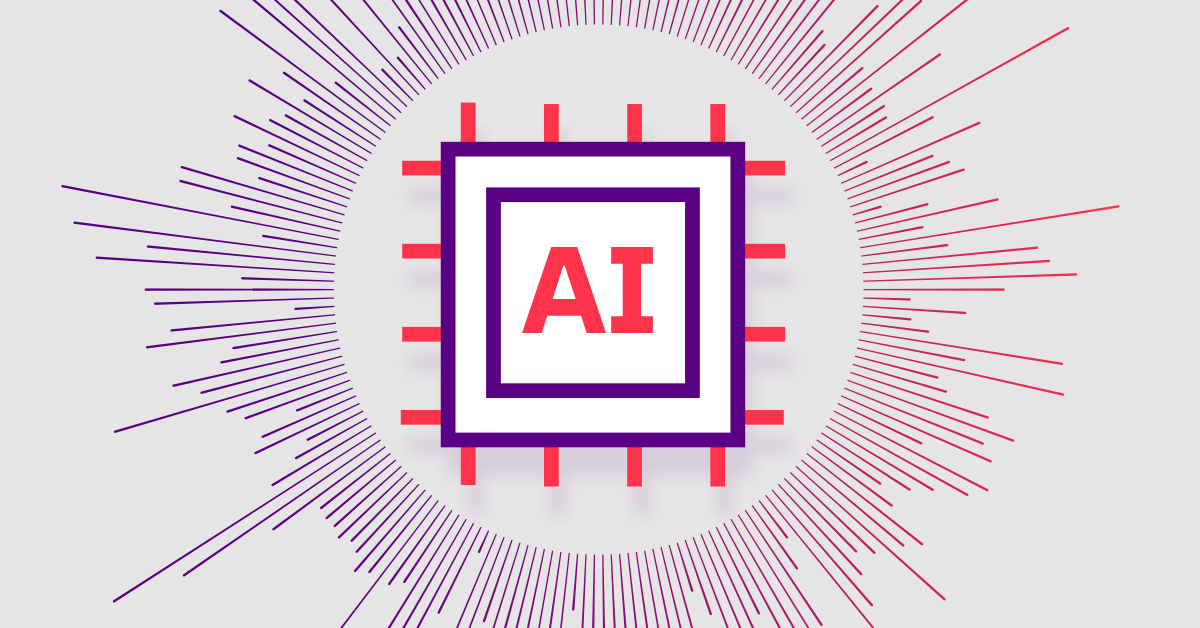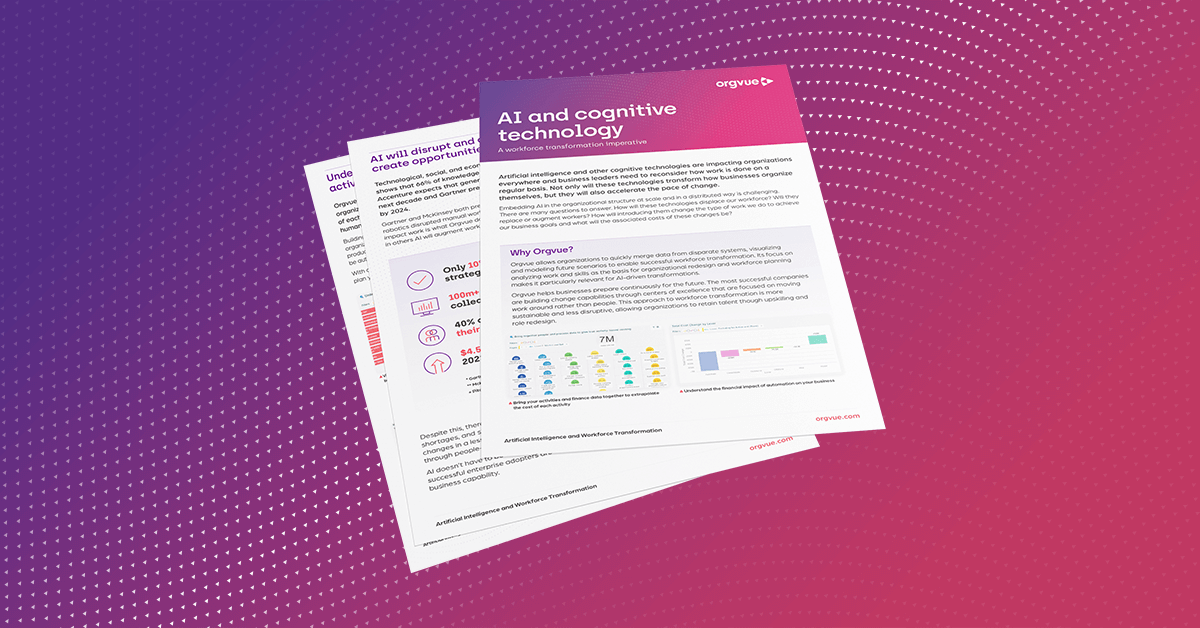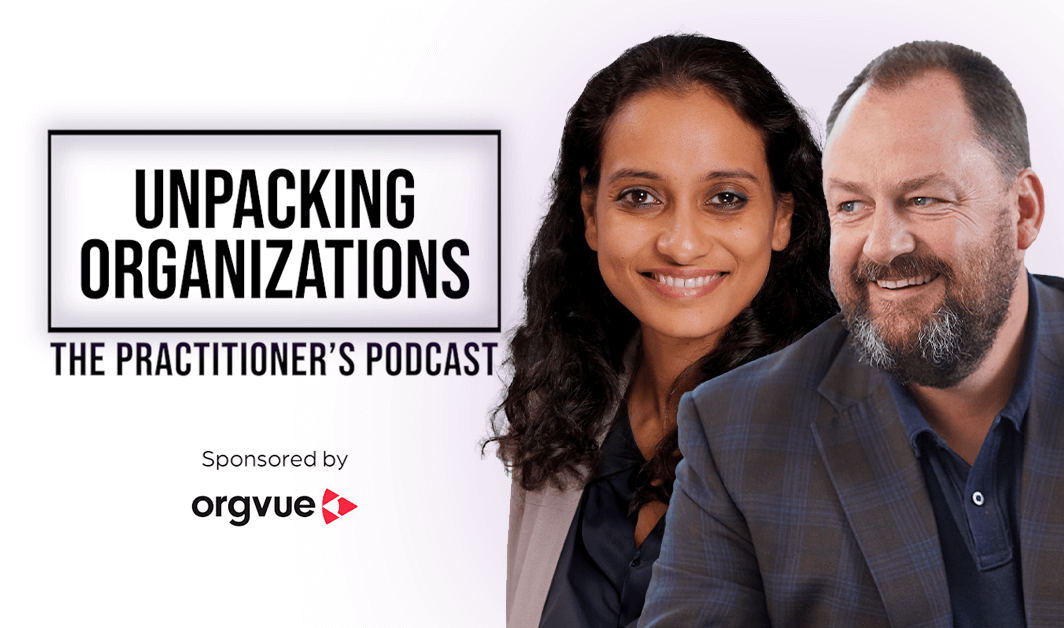Understand your workforce skills gaps before you rush to bring in AI
Changing skills needs are causing unprecedented talent shortages but AI can help meet demand
More resources

During the webinar, our speakers will explore how Orgvue can help in gathering and using workforce data to identify areas where AI will have the most significant impact.

Download our latest infographic to help you understand how the adoption of AI can provide huge opportunities for your organization.

Embedding AI in the organizational structure at scale and in a distributed way is challenging. There are many questions to answer. This document attempts to tackle them.

Join organizational design practitioners Rupert Morrison and Shradha Prakash as they discuss the passion topics around org design, breaking down key areas and explaining some of the complexities.
